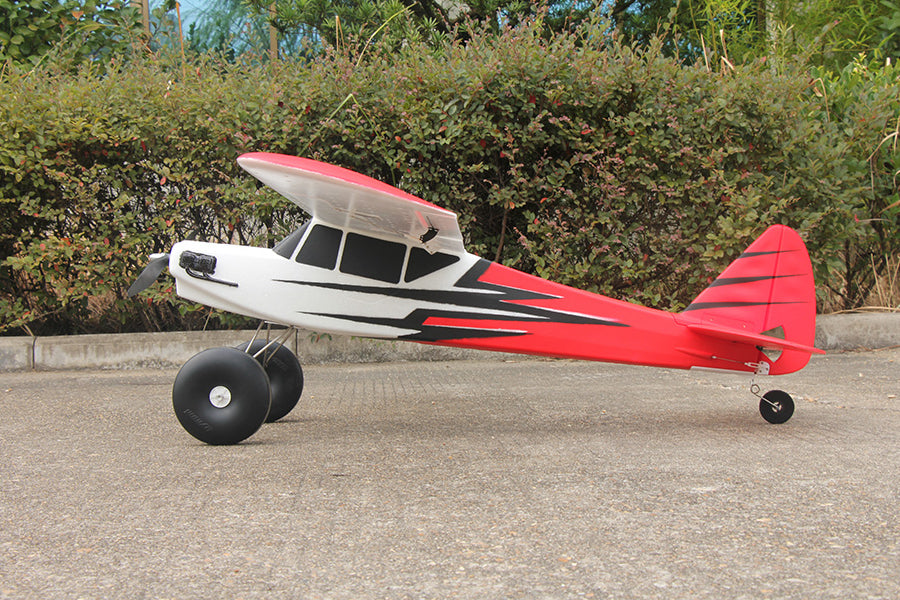How to Fly an RC Airplane for Beginners

Learning to fly an RC (Radio-Controlled) airplane can be an exciting adventure for any beginner. As an experienced RC enthusiast, I’ll walk you through the essential steps, tips, and insights that make flying a breeze, particularly using the beginner-friendly Dynam Primo RC Trainer. Here, I’ll cover everything you need to know, from choosing your first plane to understanding the basics of flight, safety, and troubleshooting. Let's get started!
Table of Contents
- Choosing Your First RC Airplane
- Understanding Basic RC Controls
- Getting Ready to Fly
- Flying Your RC Airplane
- Common Challenges and Solutions
- FAQs for Beginner RC Pilots
- My Experience with the Dynam Primo RC Trainer
Choosing Your First RC Airplane
The first step to becoming an RC pilot is selecting a suitable beginner aircraft. For new pilots, a trainer-style remote control airplanes for beginners is ideal, as it provides stable handling and easy control. Here are some factors to consider:
Key Features of a Good Beginner RC Plane
- Durability: Look for planes with resilient materials, as crashes are common in the early stages.
- Stability: High-wing planes, like the Dynam Primo, are more stable in the air.
- Size: Beginner planes are generally medium-sized, which makes them easier to control but large enough to see at a distance.
Choosing a reliable trainer model like the Dynam Primo RC Trainer can make a world of difference. Its durable construction, ease of handling, and balanced design make it an excellent choice for beginners.
Understanding Basic RC Controls
Flying an RC plane requires learning four basic controls that mirror real aircraft controls: throttle, aileron, elevator, and rudder. Each function plays a crucial role in guiding your airplane through smooth and stable flights.
| Control | Function | Purpose |
|---|---|---|
| Throttle | Controls engine power | Adjusts speed and altitude |
| Aileron | Controls roll | Turns the plane left or right |
| Elevator | Controls pitch | Moves the nose up or down |
| Rudder | Controls yaw | Stabilizes direction during turns |
Getting Ready to Fly
Preparation is key before taking your plane to the skies. Here’s a checklist to ensure a smooth start:
- Location Selection: Choose a large open area, free from obstacles like trees, power lines, and buildings.
- Weather Check: Calm, windless days are ideal for beginners. Wind over 10 mph can make it hard to control the plane.
- Battery Check: Make sure your batteries are fully charged.
- Range Test: Most RC controllers allow you to test the range of your signal. This is crucial for maintaining control over long distances.
- Inspect Your Plane: Confirm all parts are securely attached, and double-check the control surfaces.
With these pre-flight checks completed, you’re ready to launch!
Flying Your RC Airplane
Once everything is in place, it's time to fly! Here’s a step-by-step guide:
- Takeoff: Start by slowly increasing the throttle. Once the plane gains enough speed, gently pull back on the elevator to lift off.
- Maintaining Level Flight: Adjust the ailerons and elevator to keep the plane level. Small adjustments are best—too much input can lead to a loss of control.
- Turning: For smooth turns, gently tilt the ailerons and add a bit of rudder. Avoid sharp turns at high speeds, as these can destabilize the plane.
- Altitude Adjustment: Control your throttle and elevator to maintain a steady altitude.
- Landing: Gradually reduce throttle as you approach the landing area. Aim to bring the plane down smoothly by gently adjusting the elevator.
Pro Tip
It’s always a good idea to practice the basics like takeoff, level flight, and landing with a simulator first, as it allows you to get comfortable with the controls without risking a crash.
Common Challenges and Solutions
Even with careful preparation, you may face challenges while flying. Here’s how to handle some common ones:
| Issue | Solution |
|---|---|
| Plane Won't Take Off | Check throttle; ensure enough speed before attempting liftoff. |
| Plane Drifts to One Side | Adjust ailerons and check for wind interference. |
| Crash Landing | Examine and repair any damage; reinforce weak areas. |
| Lost Signal | Stay within range; upgrade to a transmitter with longer range if needed. |
FAQs for Beginner RC Pilots
Q: What’s the best RC airplane for beginners?
A: Trainer planes with high-wing designs, like the Dynam Primo, are ideal due to their stability and ease of control.
Q: How high and far can I fly my RC plane?
A: Most beginner planes can fly up to 400 feet high and within a range of 500-1,000 feet, depending on the transmitter.
Q: How long can I fly on a single charge?
A: Flight time typically ranges from 8 to 12 minutes, depending on the model and battery capacity. It’s wise to bring spare batteries for extended flying.
Q: How do I repair my RC plane after a crash?
A: Many RC planes are made of foam, which can be fixed with foam glue. Reinforcing joints with tape or glue helps strengthen your plane for future flights.
My Experience with the Dynam Primo RC Trainer
The Dynam Primo RC Trainer has proven to be an exceptional beginner plane, combining resilience, ease of handling, and reliable performance. I’ve flown various RC models, and for newcomers, the Primo stands out as a forgiving yet capable trainer. With the Primo, you get a stable high-wing design that makes takeoff, flight, and landing straightforward. I’ve watched countless new pilots successfully train on this model, learning to master the basics without feeling overwhelmed by technical details.
One memorable moment was when I introduced the Primo to a first-time flyer at my club. The look of confidence and excitement on their face after a successful first flight was priceless. I believe that starting with the right equipment can inspire a passion for the hobby—something the Dynam Primo has done for many pilots.
Final Thoughts
Flying an RC airplane is an incredibly rewarding experience, especially once you’ve mastered the basics. By choosing a reliable beginner plane, understanding your controls, and following safe practices, you’ll set yourself up for successful flights and enjoyable sessions. Remember, every expert was once a beginner—so take it one step at a time, and don’t hesitate to reach out to experienced pilots in the RC community.
- Questions and Answers
- Opinion
- Motivational and Inspiring Story
- Technology
- Live and Let live
- Focus
- Geopolitics
- Military-Arms/Equipment
- Segurança
- Economy
- Beasts of Nations
- Machine Tools-The “Mother Industry”
- Art
- Causes
- Crafts
- Dance
- Drinks
- Film/Movie
- Fitness
- Food
- Jogos
- Gardening
- Health
- Início
- Literature
- Music
- Networking
- Outro
- Party
- Religion
- Shopping
- Sports
- Theater
- Health and Wellness
- News
- Culture


